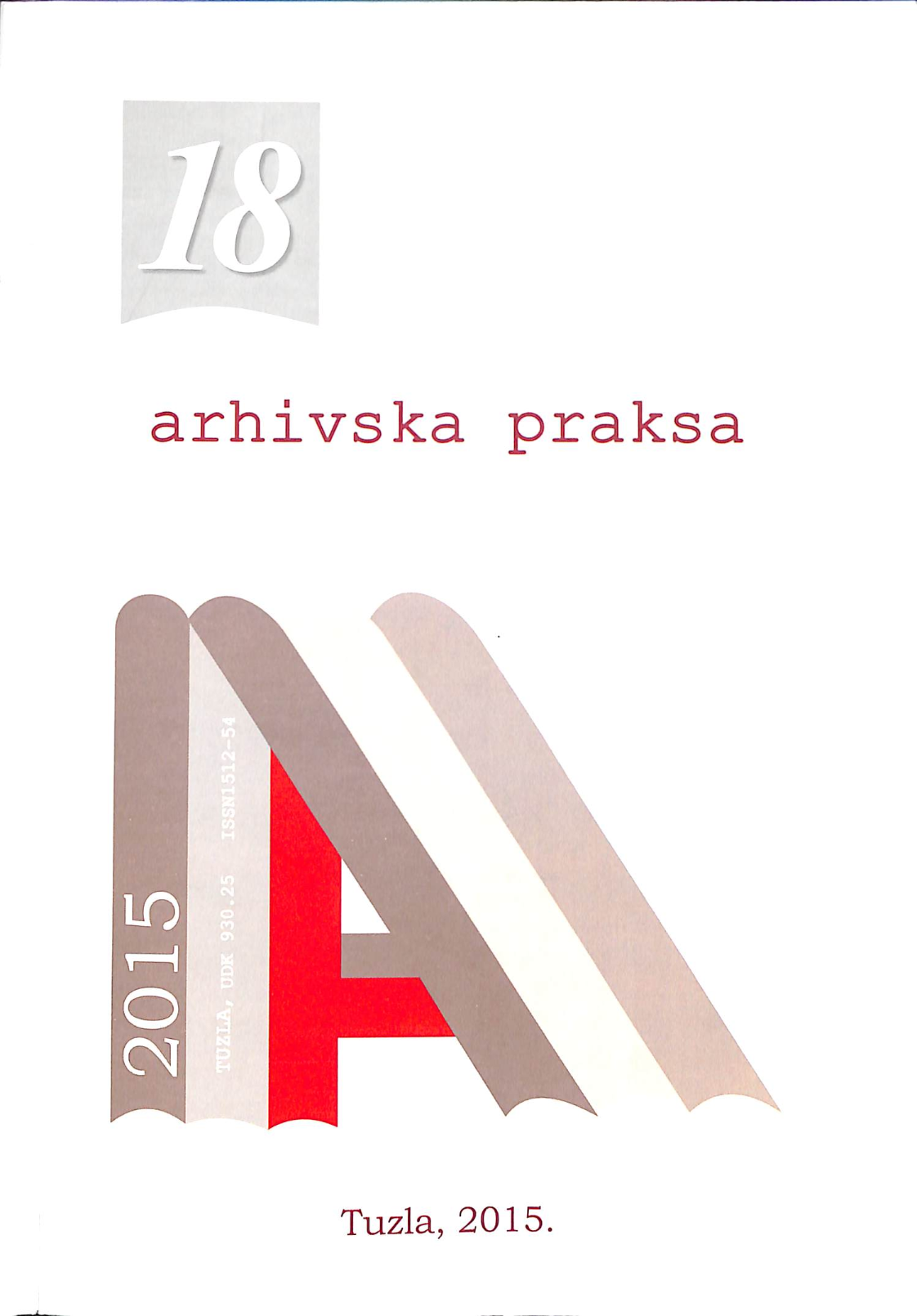Zaštita arhivske građe i zaposlenih u arhivima za slučaj vanrednih okolnosti i neposredne ratne opasnosti i rata na iskustvima Arhiva Jugoslavije prilikom NATO napada na SRJ
Protection of archival material and employees in case of emergency, threat of war and conflict with special reference to the experience of the Archives of Yugoslavia during NATO attacks against the Federal Republic of Yugoslavia
Author(s): Jovan PopovićSubject(s): Archiving, Preservation
Published by: Arhiv Tuzlanskog kantona
Keywords: archival material; archives; fires; floods; earthquakes; immediate danger of war; war aggression; technical protection; physical protection;
Summary/Abstract: In the archive work one of the most important dilemmas is present, a question about preserving archival material from the earliest times, so that the experience may be used in contemporary circumstances, both in regular and emergency situations. It also raises the question of how to preserve archival material from the recent period, especially one that is written in electronic form, because the material is threatened from many sides. The answer could be: it is difficult to achieve the knowledge of centuries of experience, the methodology and technology of archives on the preservation of rather substantial and valuable quantities of extremely important archival material. In all of past periods time, archival material was followed by unpredictable natural events (earthquakes, floods, fires), and then a number of frequent wars and other disasters and difficultnes. However, some of the key elements that have contributed to the preservation of archival materials are: location of archival buildings, technical and biological protection (climatic and other conditions), physical protection, and convenient access to means of transport of the materials, easy access for civilians and employees, parking space and other. These are essential factors in the preservation of archival material and they should be represented today. The paper listed and partly processed natural disasters, which can have serious consequences (earthquakes, floods, fires, wars). In case of imminent danger of war, in addition to local regulations, the priority is to apply the provisions of international legal norms, and above all the Convention of Protection of Cultural Properties in the Case of Armed Conflict (The Hague, 14 May 1954) and the Convention of Protection of the World Cultural Heritage (Paris, 21th November 1972). The obligations of the Parties during the military conflict were that all properties listed in the “international register of cultural property under special protection” to be labeled with certain signs of recognition and featured in visible places, to make them accessible to international control, because the opposing parties “must preserve and respect cultural properties.” However, despite the commitments of the conventions, there were many bilateral, regional or local wars, in which the practice has shown that it does not sufficiently protect cultural monuments, even archival material. It is one of the reasons way it was resorted to other preventive protection measures. The Archives of Yugoslavia in the period of the NATO bombing practiced all the provisions of the said conventions. If the valorization of archival material in a timely classification is not approached, then there will be congestion, and incomplete protection of archival materials and current materials in changed conditions. When aggression, or, in case of war, the appeal should be immediately referred to national, regional, European and international associations in field of science and culture (UNESCO, ICA, IFLA, FIAF and others) to have them timely and loudly react with the aim of “protecting cultural properties”. The domestic positive law legislation that regulates this area should be followed, as well as internal documents and plans. It is very important, hearty most important, that archival materials stay where it was and is, in storages of archives. Off shoring is, unless there is a need, performed much earlier - in a timely manner. Digitization, as a new form of records (generation and transmission of an original analogue material to a digital form), we consider it necessary to “import”, primarily in the archival material that comes from the oldest date, provided that it is fully transferred, due to the few surviving documents, the archival material thatis categorized as a cultural asset of great and extraordinary importance should be digitized, and further in order, archival material according to categorization, and material that is the subject of common research.
Journal: Arhivska praksa
- Issue Year: 2015
- Issue No: 18
- Page Range: 51-69
- Page Count: 19
- Language: Bosnian, Croatian, Serbian

